2014 Yamaha Viper vs. 2002 Yamaha SX Viper
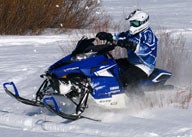
Yamaha's 2014 Viper shares more than just a name with its 2002 predecessor
If you thought that “Viper” name seemed familiar, you’re correct. Yamaha brought the name to its line of snowmobiles for the 2002 model year. It followed in the track prints of the company’s reinvented SRX high performance sled, which hit the snows in the late 1990s. In fact, the 2002 Viper two-stroke triple owed much of its performance design to the 696cc SRX engine.
But, when we move ahead a decade, we find that the 2002 Viper and the 2014 Viper share very little except the name and performance intentions. The original Viper drew a bead on the trail performance veteran who skewed between 32 and 41 years of age and had 14 to 20 years of riding experience. To accomplish this, Yamaha expanded the Viper line a bit to include a deep powder Mountain version, but the key model zoomed in on the heart of the market, which back then was a 120-hp model on an aluminum construction chassis with a 121-inch track – or thereabouts.
Heading into 2014, Yamaha attacks the market with a brand new Arctic Cat assisted plan that includes a 130-ish horsepower four-stroke triple powering a sport chassis with track lengths ranging from 129 to 141 inches. The new Viper is expected to draw in existing Yamaha owners looking to upgrade, former Yamaha owners looking for a reason to return to the brand and new buyers who want famed Yamaha reliability, proven Arctic Cat handling and a trendy new sled. The Viper also must satisfy a broader segment of riders than the two-stroke did back at the turn of the century. Today’s Viper needs to offer 30- to 50-year-old riders very good rough trail handling, groomed trail consistency and occasional off-trail capabilities. That explains the three-pronged Viper attack for 2014 that gives you a semi-backcountry version, a stretch track model and the base “short” track offering.
Interestingly, although the two Vipers may be separated by a decade, the performance parameters seem surprisingly close. The two-stroke Viper and the 2014 four-stroke should have similar performance based on power-to-weight. Although Yamaha no longer offers weights, its 2002 Viper weighed in around 489 pounds and we estimate that its new 2014 version should come in a bit north of that. Keep in mind that the new Yamaha four-stroke triple is actually lighter and more powerful than the Suzuki four-stroke twin it supersedes. Since horsepower should be in the standard “600” class between 125 and 130, doing the math shows us that each pony needs to cart around just under four pounds each.
VIEW: Read our review of the 2014 Yamaha Viper
Expect that Yamaha’s drivetrain development evolved over the years. So, despite the same nomenclature, the YVXC clutches would not be interchangeable. The 2014 drive suits the idiosyncrasies of a nice revving electronic fuel-injected four-stroke triple that provides oodles of torque from its engagement to fully shifted out top speed. The SRX-derived 696cc two-stroke will generate excitement but not as innocently as the newer 1049cc four-stroke. The simple fact of moving from carburetors to computerized fuel injection means a lot. The 2014 Viper will start easier, run more precisely, be more fuel efficient and combust fuel “greener.” That’s quite a step forward when it comes to overall performance.
Yamaha does “do” styling well. Both the original Viper and the current version apologize to no one for aggressively handsome looks. The two-stroker designed its face boldly to underscore the fact that it sucked in cooling air as part of its “forced air” induction system. The newest Viper offers a tame “base” look with a fairly traditional styled windshield, but the upgraded version attacks the elements with a very stylish low cut windscreen with side “flaps” to direct cold away from your hands and torso. Obviously the modern Viper appears to stand taller alongside the low-slung early 2000’s version.
In fact the older model should appear more compact. It’s about 10 inches shorter and two inches narrower. Both have about a 42-inch ski stance, but the suspensions linking the skis to the snow couldn’t be more different. The 2014 Viper enjoys a version of Arctic Cat’s tall spindle “race” front end that gives you 10 inches of quite supple travel. The trailing arm design of the original Viper may have been the “go-to” set up at the century’s beginnings, but even with its 9 inch travel that front end just wouldn’t keep any modern snowmobiler very happy for long. It did work well in its time as it was fitted with rebuildable aluminum gas shocks and a 16mm diameter stabilizer bar. Definitely a step ahead of leafsprings, the 2002 independent front end devolved once the RX-1, the first of Yamaha’s performance four-strokes, came out with its totally new double A-arm suspension.
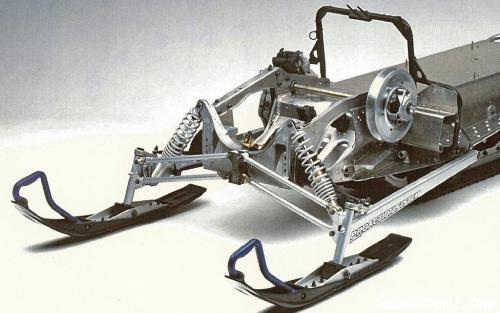 The original Viper featured a trailing arm suspension, an aluminum chassis and diecast bulkhead.
The original Viper featured a trailing arm suspension, an aluminum chassis and diecast bulkhead.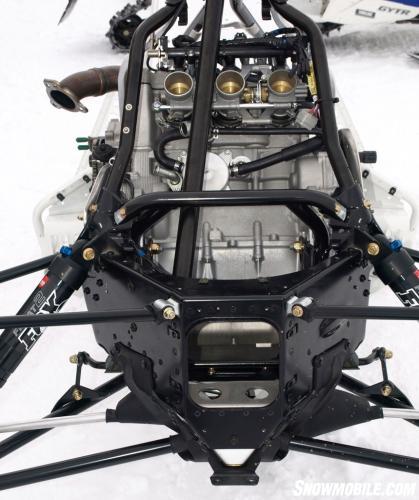 Engine location and chassis construction are quite different compared to the 2002 version with its more simple construction.
Engine location and chassis construction are quite different compared to the 2002 version with its more simple construction.The RX-1 served notice that the Viper and all two-stroke powered Yamaha snowmobiles would be relegated to snowmobile trivia. Still, the name lives on and the concept that it inspired continues with the 2014 Viper. The modern Viper looks to expand Yamaha’s trail performance niche into groomed trail, rough trail and off-trail riding.
VIEW: Read our vintage review of the 2003 Yamaha SX Viper
Said a Yamaha spokesman, “It’s a challenge to meet the customers’ needs… but we feel (that) Yamaha is best to take advantage of changes, been anticipating these changes and been working on the project quite awhile… We need to be responsive to the market, keep the pipeline clean, dealers profitable, (and) sell the hot stuff.”
Of course, that Yamaha spokesman was speaking in 2002 at the introduction of the all-new RX-1 four-stroke. But, it seems that perhaps things haven’t changed all that much as the 2014 Viper appears to hit the same concerns voiced back then. Vipers – then and now – have been important snowmobiles for Yamaha, which is intent on getting very serious about sled development and future products that once again give its dealers and Yamaha enthusiasts the “hot stuff.”
| 2014 Yamaha Viper (Base) | 2003 Yamaha SX Viper ER | |
| Engine | Yamaha Genesis four-stroke high-performance 1049cc; bore/stroke of 82.0mm/66.2mm; three-cylinder, liquid-cooled; 41mm electronic fuel injection system; dry sump lubrication | Yamaha two-stroke oil-injected performance triple; liquid-cooled; 696cc; bore/stroke 69x62mm; forced air induction to three Mikuni TM33 carbs; Yamaha Power Valve three-into-one exhaust |
| Horsepower | 130+ | 122 (estimated) |
| Drive | Yamaha YVXC drive clutch with Yamaha driven | Yamaha YVXC drive and driven; 3900 engagement rpm; 8400 shift rpm |
| Front Suspension | Yamaha SRV tall A-arm with HPG aluminum shocks; up to 10.0-in of travel | Yamaha independent trailing arm with KYB rebuildable aluminum gas shocks; 16mm diameter stabilizer bar; 9.0 inches of travel |
| Rear Suspension | Yamaha Dual Shock SR 129 parallel slide rail; aluminum high-pressure gas shocks; up to 13.5-inches of travel | Yamaha ProAction Plus slide rail with easy adjust; KYB rebuildable aluminum gas shocks front and rear; up to 11.5 inches of travel |
| Length | 118.0 in | 108.7 in |
| Width | 48.0 in | 46.1 in |
| Ski Stance | Adjustable 42-43 in | 42.1 in |
| Track | 15 x 129 x 1.25 Camoplast Rip Saw II | 15 x 121 x 15 rubber High Block pattern |
| Weight | NA | 489 lbs (Viper)/518 lbs (Viper ER)/ |
| Brake | Radial master cylinder hydraulic brake system with disc mounted on drive shaft | Hydraulic vented disc with parking brake |
| Features | Heated seat, rear storage bag, digital gauge, push button reverse, electric start | Analog/digital gauge; rear seat storage; mechanical reverse (ER); key start |
| Fuel Capacity | 10.6 US Gal | 11.8 US Gal |
| MSRP | $12,149 | $7,399 |



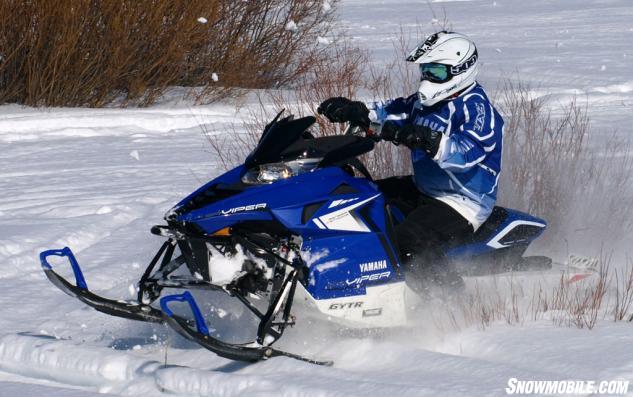
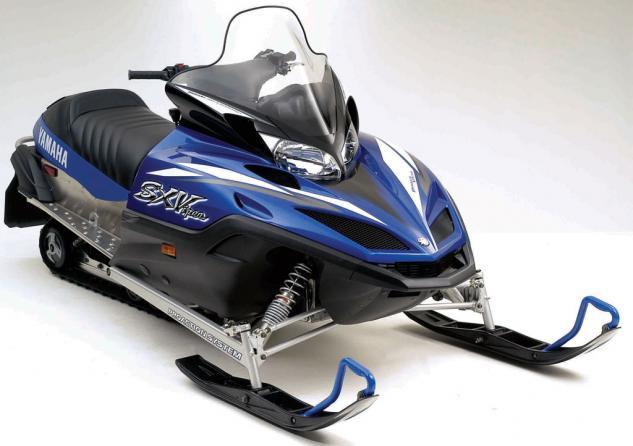
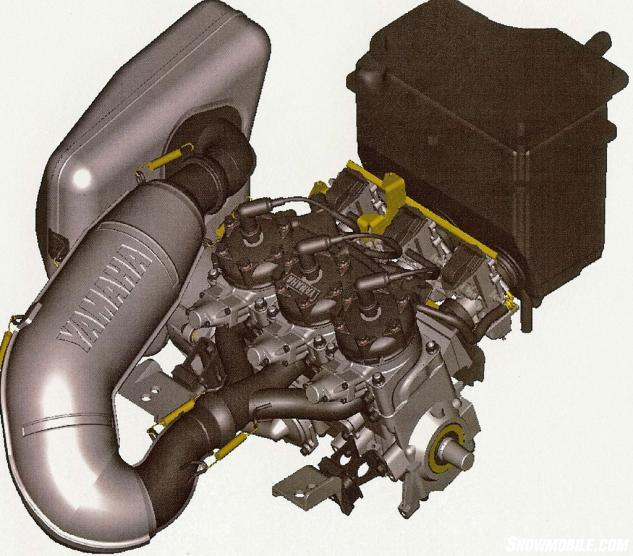
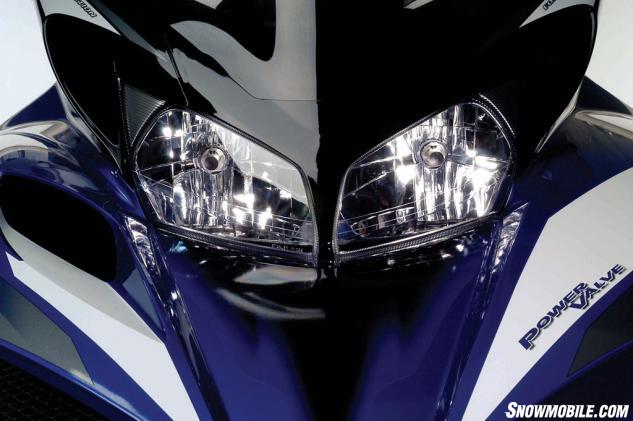





 Your Privacy Choices
Your Privacy Choices